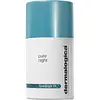What's inside
What's inside
 Key Ingredients
Key Ingredients

 Benefits
Benefits

 Concerns
Concerns

 Ingredients Side-by-side
Ingredients Side-by-side

Water
Skin ConditioningPentylene Glycol
Skin ConditioningNiacinamide
SmoothingBifida Ferment Lysate
Skin ConditioningSodium Ascorbyl Phosphate
AntioxidantCitrus Reticulata Peel Extract
Skin ConditioningButylene Glycol
HumectantGlycerin
HumectantFructose
HumectantUrea
BufferingCitric Acid
BufferingSodium Hydroxide
BufferingMaltose
MaskingSodium PCA
HumectantSodium Chloride
MaskingSodium Lactate
BufferingTrehalose
HumectantAllantoin
Skin ConditioningSodium Hyaluronate
HumectantGlucose
HumectantMethyl Gluceth-20
HumectantXylitylglucoside
HumectantAnhydroxylitol
HumectantXylitol
HumectantCentella Asiatica Extract
CleansingPolygonum Cuspidatum Root Extract
AntioxidantScutellaria Baicalensis Root Extract
AstringentCamellia Sinensis Leaf Extract
AntimicrobialGlycyrrhiza Glabra Root Extract
BleachingRosmarinus Officinalis Leaf Extract
AntimicrobialChamomilla Recutita Flower Extract
MaskingTetrasodium EDTA
Xanthan Gum
EmulsifyingPhenoxyethanol
PreservativeChlorphenesin
AntimicrobialWater, Pentylene Glycol, Niacinamide, Bifida Ferment Lysate, Sodium Ascorbyl Phosphate, Citrus Reticulata Peel Extract, Butylene Glycol, Glycerin, Fructose, Urea, Citric Acid, Sodium Hydroxide, Maltose, Sodium PCA, Sodium Chloride, Sodium Lactate, Trehalose, Allantoin, Sodium Hyaluronate, Glucose, Methyl Gluceth-20, Xylitylglucoside, Anhydroxylitol, Xylitol, Centella Asiatica Extract, Polygonum Cuspidatum Root Extract, Scutellaria Baicalensis Root Extract, Camellia Sinensis Leaf Extract, Glycyrrhiza Glabra Root Extract, Rosmarinus Officinalis Leaf Extract, Chamomilla Recutita Flower Extract, Tetrasodium EDTA, Xanthan Gum, Phenoxyethanol, Chlorphenesin
Water
Skin ConditioningCyclopentasiloxane
EmollientMethylheptyl Isostearate
Skin ConditioningButylene Glycol
HumectantDimethicone
EmollientCetyl Alcohol
EmollientIsohexadecane
EmollientCetearyl Alcohol
EmollientGlyceryl Stearate Citrate
EmollientCetearyl Ethylhexanoate
EmollientCetyl Caprylate
EmollientRubus Idaeus Seed Oil
EmollientVaccinium Macrocarpon Seed Oil
Skin ConditioningVigna Aconitifolia Seed Extract
Skin ConditioningStrelitzia Nicolai Seed Aril Extract
Skin ConditioningOligopeptide-34
Skin ConditioningLactobacillus/Pumpkin Fruit Ferment Filtrate
Skin ConditioningMagnesium Ascorbyl Phosphate
AntioxidantNiacinamide
SmoothingCananga Odorata Flower Oil
MaskingTocopherol
AntioxidantBeta-Sitosterol
Emulsion StabilisingZinc Glycinate
BufferingDecyl Glucoside
CleansingPolysilicone-11
Sodium Cocoyl Glutamate
CleansingDipotassium Glycyrrhizate
HumectantHydrogenated Phosphatidylcholine
EmulsifyingPotassium Cetyl Phosphate
EmulsifyingGlyceryl Caprylate
EmollientDimethicone Crosspolymer
Emulsion StabilisingDimethiconol
EmollientAcrylates/C10-30 Alkyl Acrylate Crosspolymer
Emulsion StabilisingAminomethyl Propanol
BufferingDisodium EDTA
Ethylhexylglycerin
Skin ConditioningPhenoxyethanol
PreservativeWater, Cyclopentasiloxane, Methylheptyl Isostearate, Butylene Glycol, Dimethicone, Cetyl Alcohol, Isohexadecane, Cetearyl Alcohol, Glyceryl Stearate Citrate, Cetearyl Ethylhexanoate, Cetyl Caprylate, Rubus Idaeus Seed Oil, Vaccinium Macrocarpon Seed Oil, Vigna Aconitifolia Seed Extract, Strelitzia Nicolai Seed Aril Extract, Oligopeptide-34, Lactobacillus/Pumpkin Fruit Ferment Filtrate, Magnesium Ascorbyl Phosphate, Niacinamide, Cananga Odorata Flower Oil, Tocopherol, Beta-Sitosterol, Zinc Glycinate, Decyl Glucoside, Polysilicone-11, Sodium Cocoyl Glutamate, Dipotassium Glycyrrhizate, Hydrogenated Phosphatidylcholine, Potassium Cetyl Phosphate, Glyceryl Caprylate, Dimethicone Crosspolymer, Dimethiconol, Acrylates/C10-30 Alkyl Acrylate Crosspolymer, Aminomethyl Propanol, Disodium EDTA, Ethylhexylglycerin, Phenoxyethanol
Ingredients Explained
These ingredients are found in both products.
Ingredients higher up in an ingredient list are typically present in a larger amount.
Butylene Glycol (or BG) is used within cosmetic products for a few different reasons:
Overall, Butylene Glycol is a safe and well-rounded ingredient that works well with other ingredients.
Though this ingredient works well with most skin types, some people with sensitive skin may experience a reaction such as allergic rashes, closed comedones, or itchiness.
Learn more about Butylene GlycolNiacinamide is a multitasking form of vitamin B3 that strengthens the skin barrier, reduces pores and dark spots, regulates oil, and improves signs of aging.
And the best part? It's gentle and well-tolerated by most skin types, including sensitive and reactive skin.
You might have heard of "niacin flush", or the reddening of skin that causes itchiness. Niacinamide has not been found to cause this.
In very rare cases, some individuals may not be able to tolerate niacinamide at all or experience an allergic reaction to it.
If you are experiencing flaking, irritation, and dryness with this ingredient, be sure to double check all your products as this ingredient can be found in all categories of skincare.
When incorporating niacinamide into your routine, look out for concentration amounts. Typically, 5% niacinamide provides benefits such as fading dark spots. However, if you have sensitive skin, it is better to begin with a smaller concentration.
When you apply niacinamide to your skin, your body converts it into nicotinamide adenine dinucleotide (NAD). NAD is an essential coenzyme that is already found in your cells as "fuel" and powers countless biological processes.
In your skin, NAD helps repair cell damage, produce new healthy cells, support collagen production, strengthen the skin barrier, and fight environmental stressors (like UV and pollution).
Our natural NAD levels start to decline with age, leading to slower skin repair, visible aging, and a weaker skin barrier. By providing your skin niacinamide, you're recharging your skin's NAD levels. This leads to stronger, healthier, and younger looking skin.
Another name for vitamin B3 is nicotinamide. This vitamin is water-soluble and our bodies don't store it. We obtain Vitamin B3 from either food or skincare. Meat, fish, wheat, yeast, and leafy greens contain vitamin B3.
The type of niacinamide used in skincare is synthetically created.
Learn more about NiacinamidePhenoxyethanol is a preservative that has germicide, antimicrobial, and aromatic properties. Studies show that phenoxyethanol can prevent microbial growth. By itself, it has a scent that is similar to that of a rose.
It's often used in formulations along with Caprylyl Glycol to preserve the shelf life of products.
Water. It's the most common cosmetic ingredient of all. You'll usually see it at the top of ingredient lists, meaning that it makes up the largest part of the product.
So why is it so popular? Water most often acts as a solvent - this means that it helps dissolve other ingredients into the formulation.
You'll also recognize water as that liquid we all need to stay alive. If you see this, drink a glass of water. Stay hydrated!
Learn more about Water